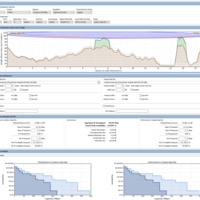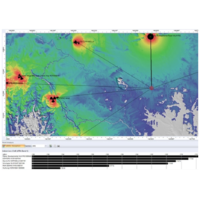Guide to 4G
What is 4G
4G is Fourth Generation high speed data service, that uses the LTE or Long Term Evolution radio standard to operate on mobile phone technology.
4G is an internet (packet) service - it is not currently used to make or receive phone calls. This means that even in 4G areas, your mobile phone will connect to a 3G tower to make a phone call.
Telstra vs Optus vs Vodafone - Network Comparison
All three major network operators in Australia provide 4G networks.
Telstra currently has the largest network with 4G and 4GX available in all metro areas, and in 1600 regional areas across Australia.
Optus is heavily investing in their 4G network covering over 700 regional areas.
Vodafone is working hard on their network, with 177 plus towers in regional areas.
Telstra 4G and 4GX
Early 2015, Telstra launched their 4GX network expansion, which includes two additional carrier frequencies - 700 MHz and 2600 MHz, on top of their existing 1800 MHz network.
The 4G expansion, coined 4GX, provides significantly further range in regional areas, and more capacity in urban areas, meaning less congestion and faster average speeds.
Using carrier aggregation, the 4GX network can allow compatible 4G modems to operate on multiple frequencies at once, increasing maximum peak speeds - theoretically as high as 300 Mbps (using 3x 20 MHz carriers).
Optus 4G
Like Telstra, Optus are rolling out of their 700 and 2600 MHz LTE networks, providing more coverage with faster average and peak data rates. Both networks aim for 90% population coverage.
The network gets a little confusing, with Optus also operating a 2300 MHz 4G service in urban areas for greater capacity. As such it's often best to select an antenna that can operate on all frequencies.
Vodafone 4G
Vodaphone have not purchased any 700 MHz spectrum, instead they have decided to convert their existing 850 MHz 3G network into a 4G network to compete with the new Telstra and Optus long range networks.
This network runs parallel with their existing 1800 MHz 4G network, reporting to cover over 22 million Australians.
What's so great about these frequency bands?
700 MHz
The 700 MHz network is an absolute game changer and with so many changes to 4G in Australia, it's an exciting time to jump on board a 4G network.
One of the major drawbacks with the older 1800 MHz 4G network has been that its high carrier frequency doesn't travel particularly far and doesn't penetrate well indoors.
On the other hand, 700 MHz has a low frequency that travels much further, bends around and behind hills, and easily penetrates inside buildings, providing coverage similar to Telstra Next-G.
This means high speed data will now be available for making phone calls (in switched-on areas).
We conducted several field tests that showed people could achieve over 80 Mbps using a high gain panel antenna in some locations that did not have phone coverage,
2600 MHz
There's not a lot of publicity about the new 2600 MHz 4G network, and despite having a very short range, it helps reduce congestion in densely populated areas, such as city centres where the operation of a long range transmitter would have considerable self interference (due to the long reuse distance required).
Concepts such as MIMO, antenna type, and selection will be discussed further in the relevant product categories.
For a more in-depth understanding, read our Guide to 4G Antennas and MIMO.
View our selection of 4G antennas.



